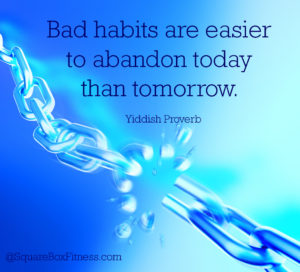 It has been a very technical week as we tried hard to activate the muscles of the back with the single arm rows. In this exercise, we were training the Latissimus Dorsi, also known as the “Lats”
It has been a very technical week as we tried hard to activate the muscles of the back with the single arm rows. In this exercise, we were training the Latissimus Dorsi, also known as the “Lats”
The “Lats” are a triangular shaped muscle that goes from your waist to under your shoulders and inserts on the upper arm bone, functionally it is a muscle of the arm.
Its main purpose is to stabilise the scapula (shoulder blade) and “swing” the arm, but it also acts to stabilise the structures of the hips and spine because of where this muscle connects. Further, the Lats compress the ribcage, facilitating expiration of the breath.
How useful are the “Lats” in everyday life?
It is a very exciting question! When we think about how we walk or run and the movement of the arms, we see that it is effectively a standing alternating single arm row.
Therefore, by improving the condition of the Lats, we can run or walk faster, control our breathing and improve our fitness.
Fitness is not about binge exercising
Unfortunately, muscles like the Lats are quickly deactivated through modern sedentary life and create problems for people who engage intensively in “get fit quick” schemes sporadically.
Inconsistent exercising compromises the mechanics of the body. The body doesn’t automatically recruit all the muscles is should; it will recruit those muscles it has habitually learned to use.
The problem is, whenever a muscle is overused and begins to fail, the failure often leads to compromised function of muscles further down the chain and consequently leads to injury.
Hidden habits that derail fitness
I believe the most dangerous modern habit is looking for the perfect diet and exercise plan. It leads to failure and disappointment.
The habit of yo-yo dieting and exercising through life is exhausting and futile.
Samuel Johnson, an English writer, said: “The chains of habit are generally too small to be felt until they are too strong to be broken.”
If you are constantly trying to lose weight and get fit; the high of the “try” becomes an addictive habit. It will make you feel great for the first three weeks then fall by the wayside like all other attempts when the endorphin rush fails to motivate.
The truth is, any diet or exercise plan will work providing you stick with it for some time.
21 days to create a habit?
The fitness industry proclaims 21 days as the magic time to make or break a habit. The idea came from Maxwell Maltz, a plastic surgeon who published it in his book in 1960. He noticed that his patients took about 21 days to get used to their new faces.
The missing detail is that plastic surgery patients do not have the choice to return to their old face, and they must accept the change. The process of acceptance without choice may well be 21 days.
With choice, habits die hard. In a 2009 study, researchers from University College London examined the new habits of 96 people over 12 weeks and found that the average time it took for a new habit to form is closer to 66 days and sometimes closer to 254 days.
Are you ready?
The most important question to ask yourself is why you are exercising. If the answer is purely aesthetics, then it may be difficult to achieve your goals. Making changes for what other people see has limited traction.
If your answer is to live a healthy active life, then our program is for you.
Our Shape-Up classes are about learning or relearning movement skills that are directly applicable to enjoying an active life.
Each time you come to class, we will let you know what the class is trying to achieve, with this in mind, you can work to your best ability to initiate healthy habits.
Getting ready for exercise begins the night before and it is the essential part of making fitness an integral part of your daily healthy habit.
Take for example the habit of brushing teeth; it did not happen overnight, and it is not a natural practice. Black decaying teeth are part of the natural progress of teeth. However, with modern health practices, we see winning smiles for years beyond the teeth’s natural life.
Daily exercise becomes a habit with consistent repetition. With it comes the rejuvenation of your body that radiates your inner health and happiness. You can’t see it, but you will feel the winning smile for years to come!
I leave you this week with a Yiddish reflection on habits.
“Bad habits are easier to abandon today than tomorrow”
Live well and eat well!
Anna

Recent Comments